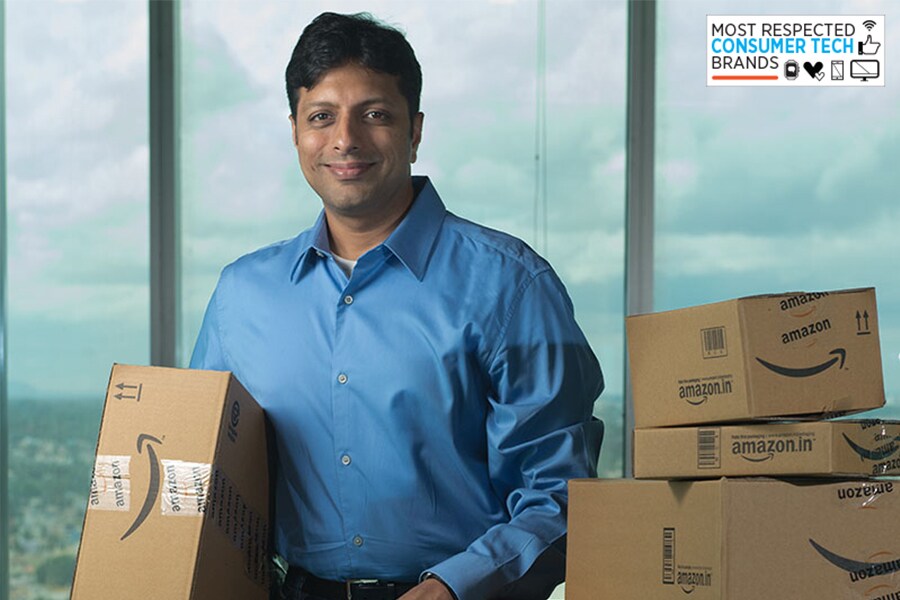
How Amazon has survived—and thrived—in the Indian market
Amazon has not only survived in India but also earned a loyal customer base by obsessing over it
 Amit Agarwal, senior VP and country manager, Amazon India, has customers at the core
Amit Agarwal, senior VP and country manager, Amazon India, has customers at the coreImage: Nilotpal Baruah
In mid-2014, when Amazon started its business in India, it was a tripartite battle for supremacy in the country’s fledgling ecommerce sector, along with Flipkart and Snapdeal. The homegrown rivals claimed to have the first-mover advantage and know the Indian terrain much better than the Seattle-headquartered company.
Five years on, Amazon has survived, thrived and earned a loyal customer base. Snapdeal has fallen by the wayside while Flipkart was bought by Walmart. The Forbes India-TRA Research study puts Amazon as the most respected internet brand among working millennials. Overall, it is third on the list.
“Amazon has customer obsession as its core; we put all our energy behind things that matter the most to customers, which are selection, pricing, and fast and reliable delivery. We believe that as long as we deliver on these, customers of all ages will continue to choose us,” says an Amazon India spokesperson on email. “Three principles—obsess about customers, invent on their behalf, and think long term—sum up our culture of innovation. We will continue to invest in the country and are excited by the foundation that we have built.”
Amazon India has been working steadily towards this goal, be it with a fulfilment and logistics network that ensures timely delivery, or a Hindi version of its website and app to attract India’s regional language-speaking populace.
Its Prime subscription service, which offers free and fast delivery apart from a vast library of video and music content, has also been instrumental in cementing Amazon’s position in India, say analysts.
“Prime has played a major role in strengthening Amazon’s stand in the metros and beyond. Prime customers are loyal and order more frequently across more categories. Also, there isn’t a competing product in the market,” says Satish Meena, senior forecast analyst at Forrester, a market research firm.
(This story appears in the 30 November, -0001 issue of Forbes India. To visit our Archives, click here.)







